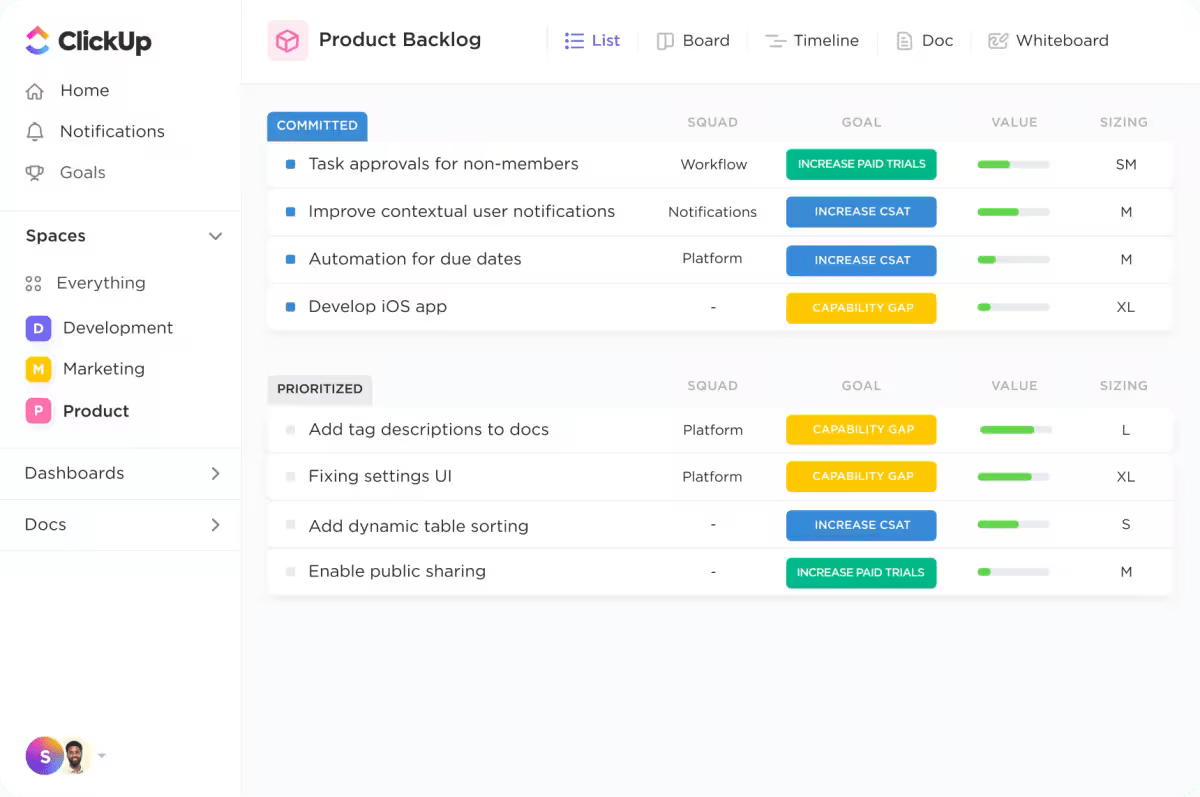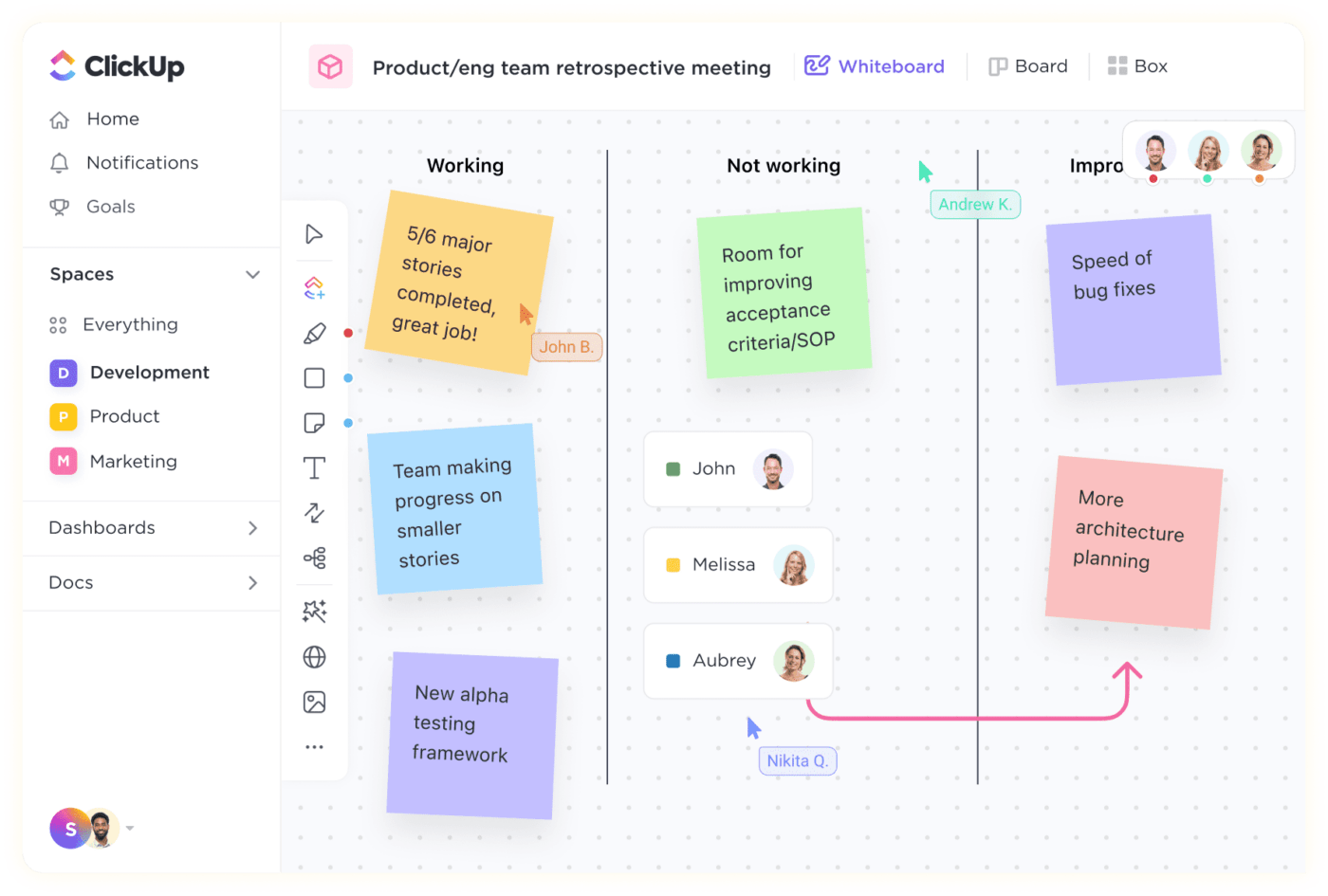How Can Backlog Grooming Help Your Product Team?

Sorry, there were no results found for “”
Sorry, there were no results found for “”
Sorry, there were no results found for “”
A lot of software development best practices focus on what is to be done in the present—at best in the current sprint. While this is necessary, it is also short-sighted.
Good product teams also keep an eye on the future. An essential process in such future-focused planning is backlog grooming.
Thoughtful backlog grooming can transform your team’s productivity, streamline processes, and lead to successful delivery. Here’s how.
Backlog grooming, also known as backlog refinement, is the collaborative evaluation, enhancement, prioritization, and update of the items on the product backlog.
This is not to be confused with the sprint backlog, i.e., items of the current sprint yet to be completed, which are taken up only after it’s refined and deemed ready for development.
Typically, the backlog grooming process involves iterative sessions, during which the entire cross-functional team discusses items to ensure they align with the project’s strategic direction and available resources.
During each sprint planning meeting, teams choose and prioritize items from the backlog for development. At this point, they also evaluate and expand on the features/user stories they choose.
Why should product teams look at backlog items that may or may not be taken up in the future and groom them? Let’s see.
Makes sprint planning easier: A well-groomed backlog prioritizes tasks based on value, complexity, and urgency. During sprint planning, you can focus on immediate relevance to market/business needs and move forward effectively.
Improves productivity: An essential part of backlog refinement is adding information to the user story through definition, expected outcomes, and acceptance criteria. When developers begin work, they already have everything they need to build great products.
Brings predictability: By breaking down larger tasks into manageable pieces, backlog grooming brings a sense of repeatability and predictability into the process. As a result, teams can tackle work more efficiently, avoiding the paralysis that often comes with overwhelming projects.
Supports resource allocation: Backlog grooming ensures that resources are allocated to tasks that offer the most value. It prevents the backlog from becoming a dumping ground for every idea or request, which can dilute focus and impede progress.
Better team collaboration: Through regular grooming sessions, team members can discuss and align on the project’s direction and priorities. They can visualize the future state of some of the best whiteboard software. These discussions ensure everyone has a shared context and is working towards the same goals.
Though highly beneficial, backlog grooming, when done wrong, can present significant disadvantages. Here are some potential drawbacks of backlog grooming and how to avoid them.
Time box grooming sessions: Teams can take too much time grooming tasks, not even in the current sprint, wasting critical resources. So, set time limits for grooming sessions and direct the conversations to be focused and productive.
Know when to stop: Without a clear process, delivery teams prioritize and reprioritize the same tasks, leading to analysis paralysis. To avoid this, know when to stop and accept that you can make adjustments as new information becomes available.
Focus on long-term goals: When you groom your backlog regularly, you can lose track of long-term objectives and optimize based on immediate resource availability or need.
Avoid this and guide backlog grooming towards the project’s overarching vision. Incorporating milestone reviews into the grooming process ensures that both short-term tasks and long-term goals are aligned.
Remember to be creative: The structured nature of these sessions might stifle creativity, as the focus tends to be on refinement and estimation rather than ideation. Encourage open brainstorming outside of the grooming process to balance creativity with productivity.
While we theoretically understand what backlog grooming can do, let’s get deeper into what it looks like in practice.
If project management is the process of planning, scheduling, and implementing a series of tasks towards a common goal, backlog grooming will be among the most important decisions you make.
Unlike traditional software development methods such as waterfall or critical path method, which offer little flexibility for adapting to market changes, agile engineering—and backlog grooming—empowers you to always stay in line with user needs and market demand.
In project management, especially in agile software development, grooming is critical in the following areas.
Backlog grooming clarifies the scope of work. It helps evaluate the work that needs to be done and estimate effort/time. It enables the project manager to identify dependencies and make proactive adjustments.
Agile backlog grooming is a prerequisite for good sprint planning. Good grooming ensures backlogs and sprints are populated with work items that are well understood and accurately sized, minimizing surprises and roadblocks.

Unsure where to start? ClickUp’s Backlogs and Sprints template is the right starting point for you.
A groomed backlog:
Backlog grooming provides much-needed flexibility in an agile delivery team. It enhances task organization to embody the agile ethos of continuous improvement and responsiveness to change.
When you bring business stakeholders and client teams to the grooming session, you turn them into active participants in the project’s journey, fostering a sense of ownership and shared vision. This also helps mitigate risk through early identification and discussing of potential issues or impediments.
An important question in a process that is critical to effective project management is who should attend the backlog grooming sessions. We answer that next.
The efficacy of the product backlog grooming process in agile and scrum methodologies hinges on key stakeholders’ active participation and collaboration. Those who should attend every backlog grooming session are as follows.
The product owner is tasked with articulating the vision and ensuring that the product backlog aligns with it. A product owner’s role in backlog grooming meetings are:
The scrum master, the backlog grooming session leader, must ensure the meetings are productive and focused. Scrum master’s responsibilities in a grooming session are:
Ultimately, the developers and quality analysts will build the items on the backlog, so they need to be there. They provide invaluable insights into the technical feasibility and effort required. They will ensure the backlog is realistic, achievable, and aligned with practical capabilities.
Business representatives ensure that the backlog reflects the priorities of the business. Their participation in backlog refinement meetings aligns development efforts with business goals.
Their role in agile backlog grooming includes:
Now, invite all these people and get them into a meeting. We’ll show you how to do it right.
No individual refines backlog independently, even though many stakeholders add their input offline. Much product backlog refinement happens in meetings through discussion, collaboration, and continuous improvement.
You need the right processes and product backlog management tools to have a productive meeting. We cover both next.
The first step, even before getting into a backlog meeting, is to gather and analyze data. At this stage, compile all existing items, including:
Use a tool like ClickUp’s free project management software for a comprehensive and organized overview. See your backlog as a list, table, or a Kanban board.
You might also speak to the customer success team for any specific feedback or input they’ve received from users.

If you’re new to backlog management, use any of these product backlog templates to get started.
Not all tasks are created equal, so categorize them accordingly. Identify which of your items are:
Update the task type accordingly on ClickUp for easier access.

This step simplifies prioritization by grouping similar tasks, making allocating resources and estimating timelines easier.
Prioritize items based on key factors, such as business value, customer impact, and technical feasibility. Remember that work is not done when you prioritize once. Through every backlog grooming session, revisit—at least cursorily—all previously prioritized tasks and ensure they’re still in the same status.
For each high-priority task, estimate the effort and resources required. At this stage, get the entire team’s buy-in, including developers, testers, and DevOps specialists.

Add comprehensive user stories and use cases to ensure your estimates are accurate. Ensure that each task has an explanation of the feature from the perspective of the end user.
Set clear and measurable acceptance criteria. This ensures everyone has a shared understanding of what needs to be achieved for a task to be considered complete.
Map out dependencies between tasks. Identify potential bottlenecks or risks associated with each high-priority item, such as technical challenges or resource constraints.
Organize regular backlog refinement sessions with the project team to review progress, reassess priorities, and update the backlog. This keeps the backlog relevant and aligned with project objectives and stakeholder expectations.
Maintain open lines of communication with all stakeholders, enabling a live feedback loop. Incorporate lessons from completed tasks to refine and adjust the backlog.
Keep a detailed record of all changes made during the backlog refinement process and share updates with relevant stakeholders. This will promote transparency and keep everyone informed about the project’s progress and direction.
ClickUp Docs are a great way to record your grooming sessions. ClickUp Brain can also help summarize, proofread, and enhance your notes!
With the process nailed down, let’s look at some specific agile tools and backlog grooming best practices that can help, including the ClickUp product management software.
The duration of backlog grooming meetings can vary depending on the project’s complexity and the team’s maturity. However, as a general guideline, these sessions should last 1 to 2 hours.
Feel free to use ClickUp’s time tracking features to measure time spent on grooming sessions.
It is straightforward to discuss every little idea and lose track of time. So, get into the meeting with an agenda that clearly outlines the expected outcome. Keep the discussion focused on that. Document the conversation as well as the points you couldn’t discuss.
ClickUp Docs is a great way to do this. You can also connect ClickUp Docs to various tasks/sub-tasks, assign users, share, etc., to guide your grooming sessions.
No one likes an ad hoc ping about a 2-hour grooming session. Schedule recurring meetings as part of the project.
ClickUp’s Calendar view is a great way to integrate regular backlog grooming sessions within the project tasks and timelines. Set automated reminders to ensure all stakeholders join the meeting. For each meeting, include details on the ideal outcome so stakeholders can come prepared.
Use visual tools in your grooming meetings to encourage everyone to participate. Invite input and inspire ideas.
ClickUp Whiteboard is a great way to visually note new user stories, prioritize tasks, and connect them as a mind map.

Estimation can be tedious, so people just take a guess or wing it. Avoid this by making it contextual and, perhaps, even fun. Some commonly used agile estimation techniques are:
Prioritization is a huge part of product backlog grooming. Use the best techniques to get this part right. Two commonly used methods are:
One of the fundamental principles of agile software development is simplicity—the art of maximizing the amount of work not done—is essential.
This principle emphasizes the need to prioritize work carefully and deliberately so that we only do what creates maximum value. Backlog grooming is a great tool for achieving that.
Backlog grooming helps a project/product manager visualize the future more clearly. It helps them shape the product roadmap in the medium and the long term while actively working on the current sprint.
Product teams can dramatically improve backlog grooming effectiveness with the right project management tool.
With detailed feature descriptions (user stories), acceptance criteria (checklists), time tracking, scheduling, reminders, comments, and collaboration features, ClickUp’s agile project management software is purpose-designed for agile software development, including backlog grooming.
See how ClickUp supports backlog grooming. Try ClickUp for free today.
Backlog grooming is also called backlog refinement or story grooming.
The purpose of grooming in Scrum project management is to review, prioritize, and refine the product backlog items to ensure clarity, relevance, and alignment with project goals.
The role of backlog grooming is to ensure the software development team’s product backlog remains organized, prioritized, up-to-date, and ready for use.
© 2026 ClickUp